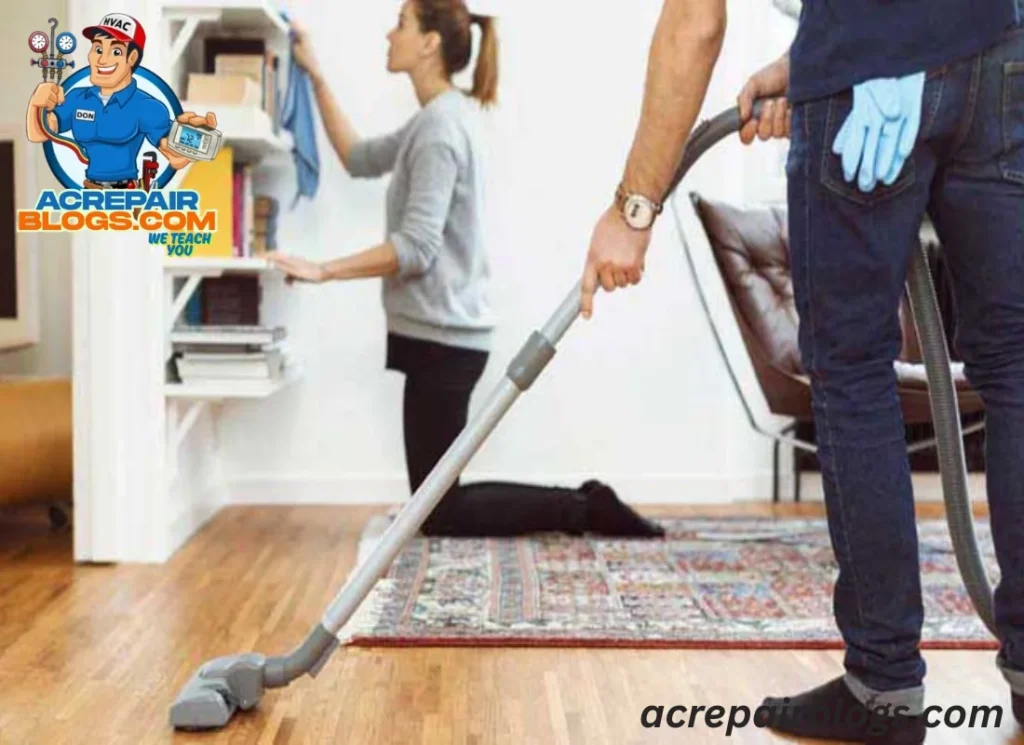DIY Tips to Reduce Dust and Allergens at Home: The Complete Guide
Introduction: Why Dust and Allergens Are More Than Just a Nuisance
Dust and allergens are common issues that are slightly irritating and affect the system and human health strongly. From triggering allergies and asthma to lowering indoor air quality, the buildup of dust mites, pollen, pet dander, and mold spores can make your home feel less livable.
The good news? You do not need expensive gadgets or professional services to improve your air. With simple DIY tips to reduce dust and allergens at home naturally, you can breathe easier and enjoy a cleaner, healthier space.
We will explore:
- How to keep your house dust-free with simple cleaning hacks.
- The best DIY methods for controlling indoor allergens.
- Practical home cleaning tips for allergy and asthma relief.
- Easy steps to reduce dust mites and pet dander indoors.
- How to create an allergy-friendly home environment.
- Affordable DIY solutions to improve indoor air quality.
- Natural remedies to minimize dust and allergens inside your home.
Understanding the Sources of Dust and Allergens
Before we dive into solutions, let’s look at what you are actually battling:
- Dust mites: Microscopic organisms that feed on skin flakes.
- Pet dander: Tiny particles of skin, fur, and saliva from cats, dogs, and other pets.
- Pollen: Carried indoors from windows, doors, and clothing.
- Mold spores: Thrive in damp, humid environments.
- Household dust: A mix of dirt, lint, fibers, and skin cells.
👉Dust and allergens can be eliminated by having the correct knowledge.
DIY Tips to Reduce Dust and Allergens at Home Naturally
- Adopt a Strategic Cleaning Routine
The foundation of an allergen-free home is regular cleaning.
- Dust with microfiber cloths: They trap dust instead of spreading it.
- Vacuum with HEPA filters: Standard vacuums blow allergens back into the air.
- Mop floors weekly: Water-based cleaning helps capture particles left behind.
👉 These are simple but effective DIY tips to reduce dust and allergens at home naturally.
2. Wash Fabrics Regularly
Soft surfaces are allergen magnets.
- Wash bedsheets, pillowcases, and blankets weekly in hot water.
- Use dust-mite-proof covers on pillows and mattresses.
- Wash curtains, throw blankets, and cushion covers every few weeks.
3. Control Humidity Levels
Dust mites and mold thrive in high humidity.
- Keep humidity between 40 to 50%.
- Use dehumidifiers in damp areas like basements.
- Run exhaust fans in bathrooms and kitchens.
This creates an allergy-friendly home environment where allergens can not thrive.
4. Groom Pets and Manage Pet Dander
If you have pets, allergens are unavoidable, but manageable.
Brush pets outdoors to prevent fur and dander buildup.
Bathe them regularly with vet-approved shampoos.
Keep pets out of bedrooms to reduce allergen exposure where you sleep. Cleaning tips for allergy and asthma that should be considered for pet owners.
5. Seal and Clean Air Ducts
Air ducts can collect dust and circulate it throughout your home.
Inspect ducts every 2 to 3 years.
Seal leaks with duct tape or insulation.
Consider professional cleaning if buildup is severe.
6. Upgrade Your Air Filters
A simple filter change can dramatically improve air quality.
Use HEPA filters in HVAC systems.
Replace filters every 1 to 3 months.
Consider adding standalone HEPA air purifiers in bedrooms or living rooms.
7.Use Natural Cleaning Solutions
Store-bought cleaners often contain chemicals that irritate allergies. Instead, try natural options:
- Vinegar + water: Cuts grease and disinfects surfaces.
- Baking soda: Great for deodorizing carpets and upholstery.
- Lemon juice: Natural antibacterial properties.
8.Declutter to Minimize Dust Traps
Less clutter = fewer surfaces to collect dust.
- Store items in closed cabinets or bins.
- Donate unused fabrics, clothes, and rugs.
- To clean faster and effectively, keep the surfaces open.
9.Focus on Entry Points
Stop allergens before they enter your home.
- Place doormats at every entrance.
- Ask family members to remove shoes indoors.
- Wipe down pets’ paws after outdoor walks.
These easy steps to reduce dust mites and pet dander indoors also prevent outdoor allergens like pollen from spreading inside.
10.Ventilate Wisely
Good airflow helps control allergens but requires balance.
When irritant counts are lower in early morning or late evening while opening the windows
Use exhaust fans to remove stale air.
Pair natural ventilation with air purifiers for best results.
Best DIY Methods for Controlling Indoor Allergens: Extra Tips
- Replace old carpets with hardwood or vinyl flooring.
- Vacuum mattresses to reduce dust mites.
- Wash stuffed toys weekly if children have allergies.
- Keep houseplants limited, some attract mold.
Affordable DIY Solutions to Improve Indoor Air Quality
Here are low-cost ideas:
- DIY air purifier hack: Attach a HEPA filter to a box fan.
- Salt lamps: Help reduce airborne particles naturally.
- Indoor plants like peace lilies or snake plants: Absorb toxins while adding beauty.
Conclusion: Take Control of Your Indoor Air
Dust and allergens do not have to control your comfort. With consistent habits and these DIY tips to reduce dust and allergens at home naturally, you can:
- Improve indoor air quality.
- Reduce allergy and asthma symptoms.
- Create a healthier, cleaner environment.
- Save money with simple, affordable solutions.
👉Remember, the best way to reduce dust and allergens at home is not one giant fix it is a collection of small, manageable habits you can implement daily. Over time, you will notice a fresher, cleaner, and allergy-friendly home.
